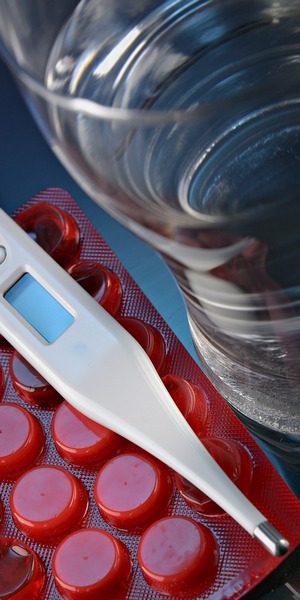Preparing for a Stress Test: Tips to Help You Ace the Exam

If you’ve been scheduled for a stress test, you may be feeling anxious about what to expect. But with some preparation and knowledge about the purpose of the assessment, you can feel confident and ready to ace it.
In this article, we’ll cover everything you need to know about preparing for the test, from understanding its purpose to the mental and physical preparations you can undertake.
Understanding the Purpose of a Stress Test
Before diving into the details of how to prepare for your trial, it’s essential to understand what it is and why doctors perform it. Essentially, a stress test measures how well your heart functions during physical activity. It’s a form of cardiovascular testing that helps your doctor identify any abnormalities in your heart’s rhythm or blood flow.
During a stress test, you’ll be asked to exercise on a treadmill or stationary bike while a medical professional monitors your heart’s function. This assessment is typically performed in a hospital or clinic setting.
In the beginning, your heart function will be assessed while you’re at rest. Then, you’ll gradually increase your physical activity until your heart rate reaches a target level. This increase in activity helps to identify potential issues with your heart’s performance that might not be noticeable when you’re at rest.
What is a Stress Test?
A stress test, also known as an exercise test or a treadmill test, is a diagnostic examination used to evaluate the heart’s function during physical activity. It’s designed to monitor the heart’s response to stress and to identify any abnormalities in its rhythm or blood flow. It is a non-invasive test that is widely used to diagnose heart problems.

The trial involves walking on a treadmill or riding a stationary bike. The speed and incline of the treadmill or resistance of the bike are gradually increased to simulate the effects of physical exertion on the heart. During the test, the patient’s heart rate, blood pressure, and electrocardiogram (ECG) are monitored.
Why Is It Important?
A stress test is an important diagnostic tool that can detect heart problems that might not be apparent during routine medical exams. It is often used to diagnose coronary artery disease, which occurs when the arteries that supply blood to the heart become narrowed or blocked. This condition can cause chest pain, shortness of breath, and other symptoms. A stress assessment can also be used to evaluate the effectiveness of treatments for heart disease, such as medications or surgery.

Stress exams are particularly important for people who are at risk of heart disease, such as those with a family history of heart disease or high blood pressure, or those who smoke or are overweight. If you’re experiencing chest pain or other potential heart attack symptoms, your doctor will likely order a stress test to determine the cause.
Different Types of Stress Tests
There are several different types of stress tests, each with its own advantages and disadvantages. Your doctor will determine which type is best for you based on your medical history and current condition:
- The most common type is the standard exercise stress test. This test involves walking on a treadmill or riding a stationary bike while your heart rate, blood pressure, and ECG are monitored. The trial usually lasts between 10 and 15 minutes;
- A nuclear stress test is a more advanced type of stress examination that uses a small amount of radioactive material to create images of your heart. This test can detect areas of the heart that are not receiving enough blood flow, which can indicate coronary artery disease;
- A stress echocardiogram is a type of stress evaluation that uses ultrasound imaging to create images of your heart before and after exercise. This test can detect abnormalities in the heart’s structure and function.
Overall, this evaluation is an important diagnostic tool that can help identify heart problems and guide treatment decisions. If you’re scheduled for the trial, be sure to follow your doctor’s instructions carefully to ensure accurate results.
Pre-Test Preparations
Once your doctor has ordered a stress test, you’ll need to schedule the exam. Be sure to choose a day and time when you’re feeling well and won’t have any conflicting appointments or responsibilities. This will help you stay relaxed and focused on the assessment.
What to Wear and Bring
It’s important to wear comfortable clothing and shoes for your stress test. If you have a favorite pair of athletic shoes, this is the time to wear them. You may also want to bring a water bottle and a snack to feast upon after the test.
Dietary and Medication Guidelines
Before the test, your doctor will give you specific instructions regarding food and medication restrictions. Be sure to follow these guidelines carefully to ensure accurate results.
Mental Preparation for the Stress Test
The prospect of undergoing a stress test can be nerve-wracking, but there are things you can do to reduce anxiety leading up to the exam. For example, try practicing relaxation techniques, such as deep breathing or meditation. You may also find it helpful to talk to a friend or family member about your feelings.
Additionally, consider the following steps:
- Utilize Visualization Techniques: Visualization is a powerful tool that can help you prepare mentally. Imagine yourself successfully completing the test and receiving good news from your doctor. Focusing on positive outcomes can help reduce anxiety and increase confidence;
- Set Realistic Expectations: It’s important to set realistic expectations for your stress test. Remember that the purpose of the exam is to identify any potential issues with your heart function, not to find fault or assign blame. Keep a positive outlook, and remember that you’re taking the necessary steps to ensure good heart health.
Physical Preparation for the Stress Test
Prior to the test, it’s important to engage in regular physical activity. This can help ensure that you’re physically prepared for the exam and that your heart is in good shape. Aim for at least 30 minutes of exercise per day in the weeks leading up to your test:
- Train: If you’re not used to regular exercise, you may want to train specifically for your stress test. This can involve gradually increasing your physical activity level over several weeks to prepare your body for the intensity of the test;
- Warm Up and Cool Down: On the day of the test, be sure to warm up before the exam. This can involve gentle stretching or walking to get your heart rate up slowly. After the assessment take a few minutes to cool down and stretch to avoid cramping or soreness later on.
Conclusion
Preparing for the test can feel overwhelming, but with some knowledge and preparation, you can feel confident and prepared for the exam. Take the time to understand the purpose of it, and follow your doctor’s instructions carefully regarding diet and medication restrictions.
Above all, stay positive and focus on the steps you’re taking to ensure good heart health. With these tips in mind, you’re sure to ace your stress test.








